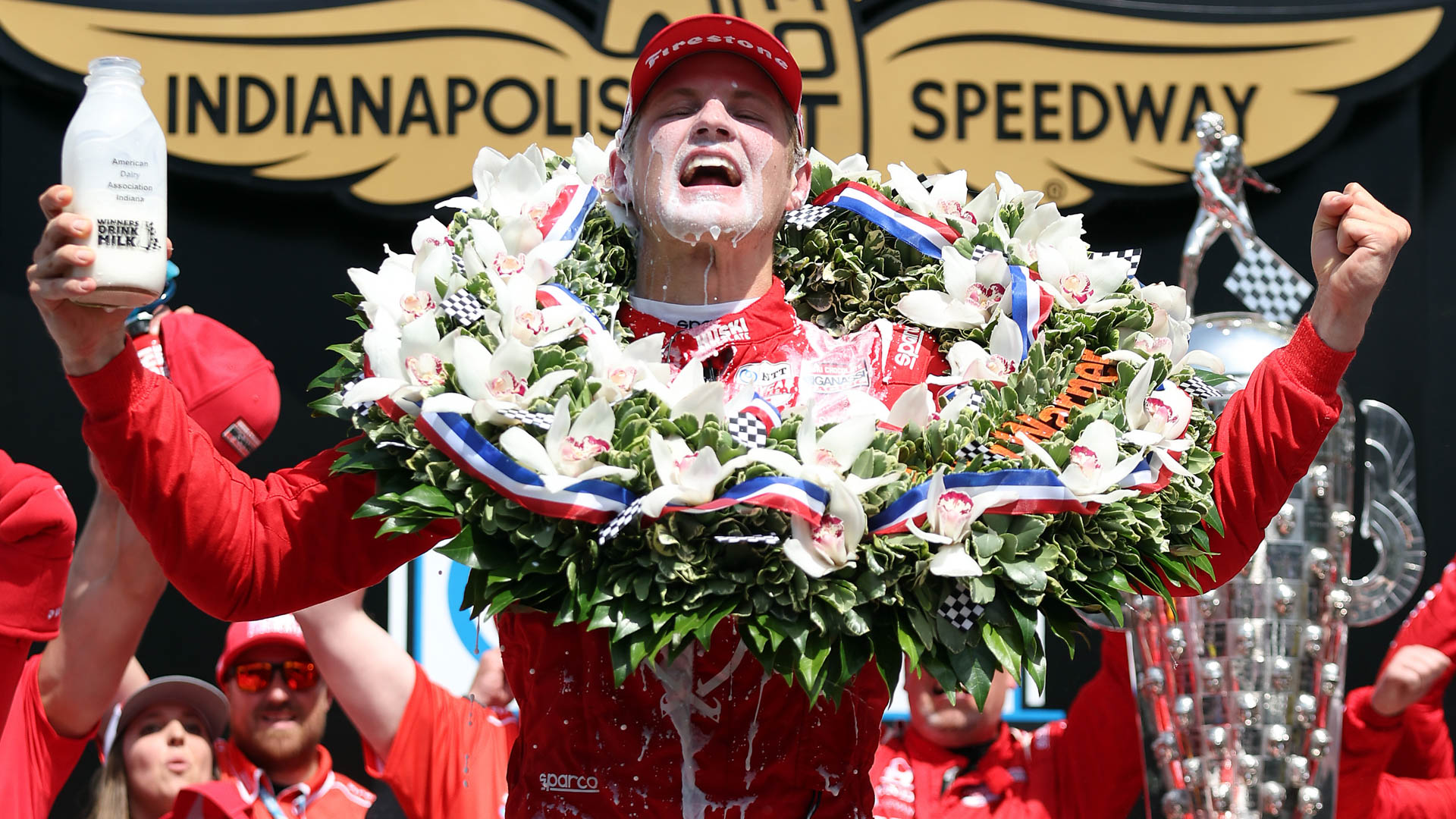

Ganassi Racing’s Marcus Ericsson stormed to a fantastic win at the 2022 Indianapolis 500, piloting his Honda-powered race car through the yard of bricks on the lap when it counted most: the final lap. He had to hold up a hard-charging Patricio O’Ward, who is headed home today in second place and wishing a final-lap crash wouldn’t have taken away his chance at a final-corner pass. Ericsson is the second Swedish racing driver to win the 500—Kenny Brack was the first in 1999.
A multitude of fans cheered on as the 33-strong field took the green flag, kicking off the 106th edition of the famed Indianapolis 500. The race, one of the oldest and most important in the world, has taken place every year since 1911, with the exception of periods surrounding the wars and other major global events.

The first half of the race elapsed rather quickly, as only two brief yellow flags interrupted the otherwise speedy pace of the leading pack. The 500’s first victim was victory contender Reenus VeeKay in the No. 21 Chevy, hitting the wall on Turn 2 but thankfully walking out of the car and to the safety of the emergency crew. The next casualty happened shortly after, with Callum Illot also stuffing the No. 77 into the wall at Turn 2. The British racing driver didn’t suffer any injuries and the track clean-up was rather brief, allowing the likes of Scott Dixon, Conor Daly, and O’Ward to continue their charge at the front.
And that’s when every Indianapolis local got on their feet, as local racer Daly took the fight to veteran Dixon and managed to pass him for the lead of the race. After a few laps of clean running, however, the race’s third yellow flag appeared on lap 106. Former F1 driver and fan-favorite Romain Grosjean smashed into the wall at—you guessed it—Turn 2. The French racer was cleared from the medical center shortly after.
“The impact is not as bad as I expected, but I don’t know what happened,” Grosjean said on the IMS broadcast. “The rear snapped on me although it was fine throughout the race. That’s the race, unfortunately.”

The action resumed once again around lap 113, with Dixon and O’Ward quickly trading the lead on and off repeatedly. Daly dropped back to third though now his side mirrors were full of the No. 7 Arrow McLaren SP car of Felix Rosenqvist. Through the course of the next 20 laps or so, former winners like Helio Castroneves and Tony Kanaan worked their way through traffic, creeping into the top six in terms of position.
On lap 135 Dixon broke an all-time record after leading a total of 645 laps with this Honda-powered, Ganassi-owned car, the most anyone’s ever led over the course of their racing career at the 500. The New Zealander also broke the record for the fastest qualifying speed during Qualifications weekend a week earlier. That’s two major records for IndyCar’s winningest driver.
Both Dixon and Daly pit on lap 143 as O’Ward inherited the lead. The Mexican racing driver then stopped for fuel and tires on lap 145, giving Kanaan the lead of the race for a couple of laps. It didn’t last long, as Rosenqvist managed to hold up Dixon enough on track, allowing O’Ward to take the lead as he emerged from the pits. By lap 147, the McLaren driver led over the Iceman and Daly.
With just 49 laps to go Penske’s Scott McLaughlin brought out the fourth yellow flag of the race, also marking the fourth single-car incident this year. The Chevy’s front end briefly snapped mid-corner, causing him to lose control and hit the wall fairly violently. The New Zealander was able to hop out of the car and was tended to by the crews. The action resumed on lap 158, leaving only 42 laps of racing left to go.
With just 25 laps to go, disaster struck for Dixon again, as he was handed a drive-through penalty for violating the 60-mph speed limit during his final pit stop on lap 178. Both Chevy-powered McLaren machines inherited the lead of the race, Rosenqvist leading O’Ward with just 20 laps to go.
With just six laps to go, Jimmy Johnson crashed on Turn 2, triggering a red flag from race control. The field was stopped so the safety crew could clean up the track, giving fans a two-lap shootout once the race resumed. Ericsson defended strongly and ultimately benefited from a final-lap yellow flag.
Four-time winner Castroneves could only manage to finish seventh, while other fan favorites like Kanaan came in third. This race also marked yet another victory for Honda over Chevrolet, clinching the win seven times over the last 10 years.
While not completely sold out, this year’s Indy 500 still welcomed over 350,000 fans and was certainly one of the most memorable of the dozen I’ve attended. With the exception of the 100th running a few years back, there was a special buzz on the grounds, with people stoked to get back to a full-capacity race following a limited admission event in 2021. In 2020, the 500 ran without fans for the first time in its 106-year history.

The IndyCar championship now heads to Detroit’s Belle Isle street course, where a single-race weekend will take place on Sunday, rather than the traditional double-header on Saturday-Sunday from years past.
Got a tip? Email us at tips@thedrive.com